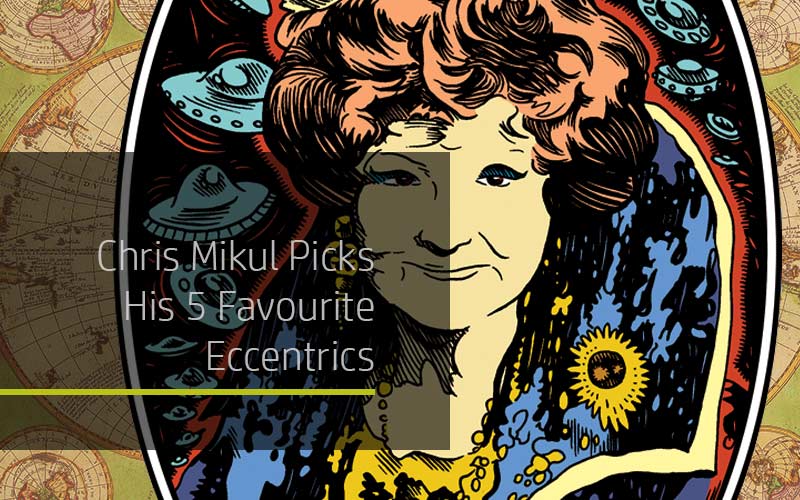
Chris Mikul Picks His 5 Favourite Eccentrics
William Chidley
Chidley was the first eccentric I discovered and he’s still my favourite. He was a sex and dress reformer who used to get around Sydney during the early years of the twentieth century wearing a skimpy Roman-style toga and underpants. That in itself was enough to get him into trouble, but when you remember that men at the time were still sweltering through Australian summers in three-piece suits, you have to wonder who was crazy.
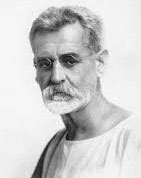
Chidley’s most important idea was that all humanity’s problems could be traced to the fact that we are having sex incorrectly. He thought that men shouldn’t have erections when they have sex (what he called dismissively ‘the crowbar method’). He thought this horrible, violent method did terrible harm to both men and women.
Chidley, by his own account, did manage to have sex with his wife Ada one night using his own method of ‘natural coition’ (there was suction involved, apparently). He never managed to do it again, but that didn’t deter him at all. He was convinced he had the answer, and wrote a pamphlet called ‘The Answer’ which he carried around in a leather bag and sold in the street.
For preaching such a frankly unworkable and harmless sex theory, Chidley was repeatedly arrested and charged with obscenity. The people of Sydney, to their credit, rallied around him. Committees were formed that worked to get him out of jail, and there were speeches defending him in the NSW Parliament. Sadly, though, he eventually wound up in an asylum, diagnosed as insane. He set fire to himself in despair one day in 1916, and died shortly afterwards.
I must have been around sixteen when I first read about Chidley. Of course I could see his theory was ridiculous, but I could also see he was an idealist and an exceptionally brave one. He genuinely thought he had ‘the Answer’ to the world’s ills, and gave his life trying to get his message out to people who mostly mocked him. I think he was magnificent.
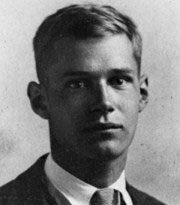
Harry Crosby
Crosby was a rich boy from Boston who, after a near-death experience in World War I, abandoned the career mapped out for him as a banker for the life of a poet. He fell in love with another Boston socialite, Polly Peabody (the inventor of the wireless bra!), whom he rechristened ‘Caresse’, and scandalously (she was already married) whisked her off to Paris.
Harry believed that unbridled hedonism would be a short-cut to genius. At one point he sent his investment banker father a telegram reading ‘PLEASE SELL OFF $10,000 WORTH OF STOCK, WE HAVE DECIDED TO LEAD A MAD AND EXTRAVAGANT LIFE’. He and Caresse were famous for the wild parties they threw, attended by the likes of Salvador Dalí. They established the Black Sun Press to publish their poetry, as well as the works of other Modernists including D.H. Lawrence and James Joyce. Harry threw money around like there was no tomorrow. At one point he inherited a fabulous library of 10,000 rare books and gave most of them away, or left them on booksellers’ stalls, marked at absurdly low prices.
Harry also devised his own religion, based on an ecstatic worship of the sun. His near-death experience had left him without any fear of death, but also a desire to embrace it. He used to ask Caresse if she would commit suicide with him, but she put him off. One of his mistresses, another Boston girl named Josephine Rotch, was more amenable. In 1929, they were found lying on a bed together in the Hotel des Artistes in New York, a gun in Harry’s hand and bullet holes in their temples. He was thirty-one. His poetry was alright, but his greatest work of art was his own life.
Bee Miles
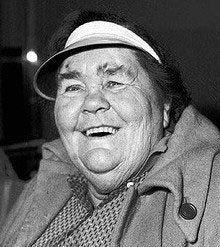
I’ve always been fascinated by ‘street characters’, those hardy individuals whose regular public appearances, doing whatever their particular thing happens be, make them so recognisable they weave themselves into the fabric of a city and become part of other people’s lives.
Beatrice ‘Bee’ Miles was one of Sydney’s finest. She was a big, rambunctious woman who was a familiar sight on its streets from the 1940s to the 1960s. She wore an army greatcoat and carried a bag full of books by her favourite authors, including Shakespeare and Nietzsche. For a shilling or two, she would recite any passage from Shakespeare, or give you a little lecture on philosophy.
She was famous for leaping into taxis and demanding to be taken somewhere for free – she thought that taxis, like all public transport, should be free – and if the driver wasn’t obliging, she was known to tear off the cab door. On one celebrated occasion in the 1950s, she jumped into a taxi in Sydney and asked to be taken to Perth, on the other side of the continent. In this case the driver was her friend, so he agreed. They set off, and every hundred miles or so she would hand a five pound note to the driver. (Although she lived on the streets, Bee was never destitute, having inherited some money from her father.) The trip to Perth and back took nineteen days, and when asked why she had gone there, she said she had wanted to pick native flowers.
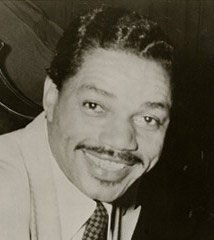
Slim Gaillard
The incomparable Gaillard began his musical career in Detroit speakeasies, and had his first hit, ‘Flat Foot Floogie (With A Floy Floy)’, in 1939. This was followed by a host of other delirious jazz-flavoured ditties, many of which contain snatches of ‘Vout’, the nonsense language he invented (start putting ‘oroonie’ or ‘ovoutie’ on the end of every second or third word you speak and you’ll be halfway there). Slim could write a song about anything. A cement mixer outside the recording studio inspired ‘Cement Mixer’ and ‘Putti Putti’ (also a hit), while the lyrics of another song were based on an Armenian restaurant menu.
The “skyscraping, zootie negro guitarist,” as Time magazine described him, was also known for his idiosyncratic musicianship, one of his specialties being playing the piano with the backs of his hands. His career stretched into the 1950s, when he recorded with the new generation of bebop players like Dizzy Gillespie, and became a god to the beatniks. Kerouac even included him in On the Road, in which Sal Paradise describes a typically way-out Gaillard performance, and notes that “For Slim Gaillard, life was one big orooni.”
After reading a magazine article about Gaillard, I spent years searching for his records in Australia without success. It wasn’t until my first trip to London in 1984 that I finally found some, in Ray’s Jazz Shop in Shaftesbury Avenue. When I went to pay for them, the guy behind the counter said, “Do you want these signed?” Slim, it turned out, had recently relocated to London, was performing again, and he was in the basement. I watched amazed as a tall, grizzled figure came up the stairs and shook my hand. How wonderful-oroonie!
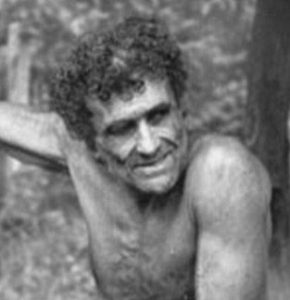
Michael Fomenko
Fomenko, also known as Australia’s Tarzan, is the only one of my favourite eccentrics still going. He migrated with his family to Australia from the Soviet Union in the 1940s, and went to an exclusive Sydney school where his father was a professor. He was a champion athlete but had no time for studies or a conventional life, instead craving adventure. At the age of twenty-four he set off for the wilds of northern Queensland where he lived a self-sufficient life of hunting and fishing. He gained huge press coverage in 1952 when he carved a dugout canoe and set off for Thursday Island (398 miles away). He ended up in Indonesia, almost dead, and had to be rescued by his father.
His mother, who had been a Russian princess, had him committed to an asylum in the 1960s where he was given electric shock treatment, but he managed to extricate himself from that, and went back to the jungle. Famed for his rudimentary attire (a lap-lap or leopard-skin underpants) and exploits like fighting off sharks with his bare hands, he was regularly tracked down by journalists keen to hear his musings on a modern world he knew little about.
He kept it up until 2012 when, attempting to walk to Sydney to visit his sister, his legendary strength finally gave out. He’s now eighty-four and confined to a wheelchair in a nursing home, reportedly content and, I hope, proud of a lifetime lived entirely on his own terms.
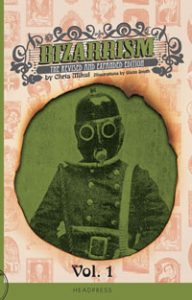
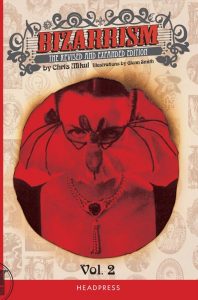 Want to know more? Pick up a copy of Bizarrism, Revised and Expanded Edition. Available in paperback and a limited special edition hardback.
Want to know more? Pick up a copy of Bizarrism, Revised and Expanded Edition. Available in paperback and a limited special edition hardback.
A unique insight into some of the strangest stories this world has to offer.
Chris Mikul
Like this article?
Related Posts
Comments
Copyright © Headpress

